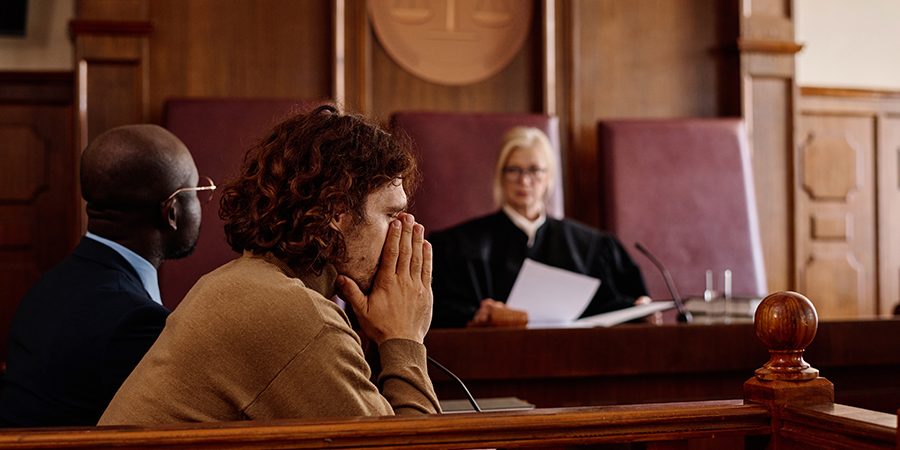After discovery, the next part of the process is the trial. Both parties present evidence to support their claims or defenses to a jury or a judge. There are two types of trials. Bench trials do not have a jury. The outcome is determined by the judge. A jury trial is determined by a jury of six or more people who hear facts related to the case. Jurors are chosen after attorneys for both parties question a pool of jurors as part of a selection process called “voir dire.”
Trial: Just before the trial, the plaintiff and defendant will present the judge a “ trial brief.” This document outlines the arguments and evidence that will be used during the trial. When the trial begins, each side gives its outline of the case in an opening statement. Next, both parties present evidence. Documents or exhibits may be introduced in support of arguments, or witnesses may be called to testify. Both plaintiffs and defendants have a chance to question witnesses in a process called “cross-examination.”
After the defendant presents its case, in a trial a plaintiff may be allowed to present “rebuttal” evidence. When all evidence has been presented, the parties give closing arguments. It’s at this point that the court instructs the jury on the law to be applied to the evidence. The jury (or judge, if it is a “bench trial”) deliberates and reaches a decision or verdict. The verdict is read in the court with both parties present.
Post-Verdict: Either party can challenge a jury’s verdict. Common reasons for challenging a verdict are errors of law by the trial court or a jury’s disregard of law or evidence. Your attorney may file a motion for judgment notwithstanding the verdict, which asks the court to disregard the verdict of the jury and come to a different decision. Another option is a motion for a new trial, which asks the court to order a new trial with a new jury.
Costs and Fees: After the verdict, the party who prevails will usually file a motion that asks the court to order the other side to pay the costs associated with litigating the case. Recoverable costs usually do not include attorneys’ fees and rarely cover all out -of-pocket costs associated with a lawsuit. Some statutes and contracts may allow the winning party to seek reimbursement of attorneys’ fees from the losing party.
Appeal: After the trial, if either the plaintiff or defendant is unhappy with the result, they may appeal the verdict. The party asks a higher court to review the proceedings of the trial court. The process is relatively similar to the initial lawsuit; both sides present arguments in brief form, along with evidence, to the appellate court. An appellate court generally reviews a case to identify legal errors. It usually will not review factual evidence or override a jury’s findings, but can, if circumstances warrant such a review. When its decision is made, the appellate court will announce it in a document called an opinion. If the appellate court affirms the verdict, that means it found no error in the trial court’s proceedings. If it deems an error occurred, the appellate court can reverse the verdict or order a new trial. Appeals will usually extend the litigation period by at least one year.
With You Every Step of the Litigation Process
ZinnLaw is a full-service firm, from assistance in resolving a dispute, to efficiently litigating a matter from discovery through trial. Areas covered include real estate, construction, loans, business transactions, commercial matters, consumer protection, and family law.

